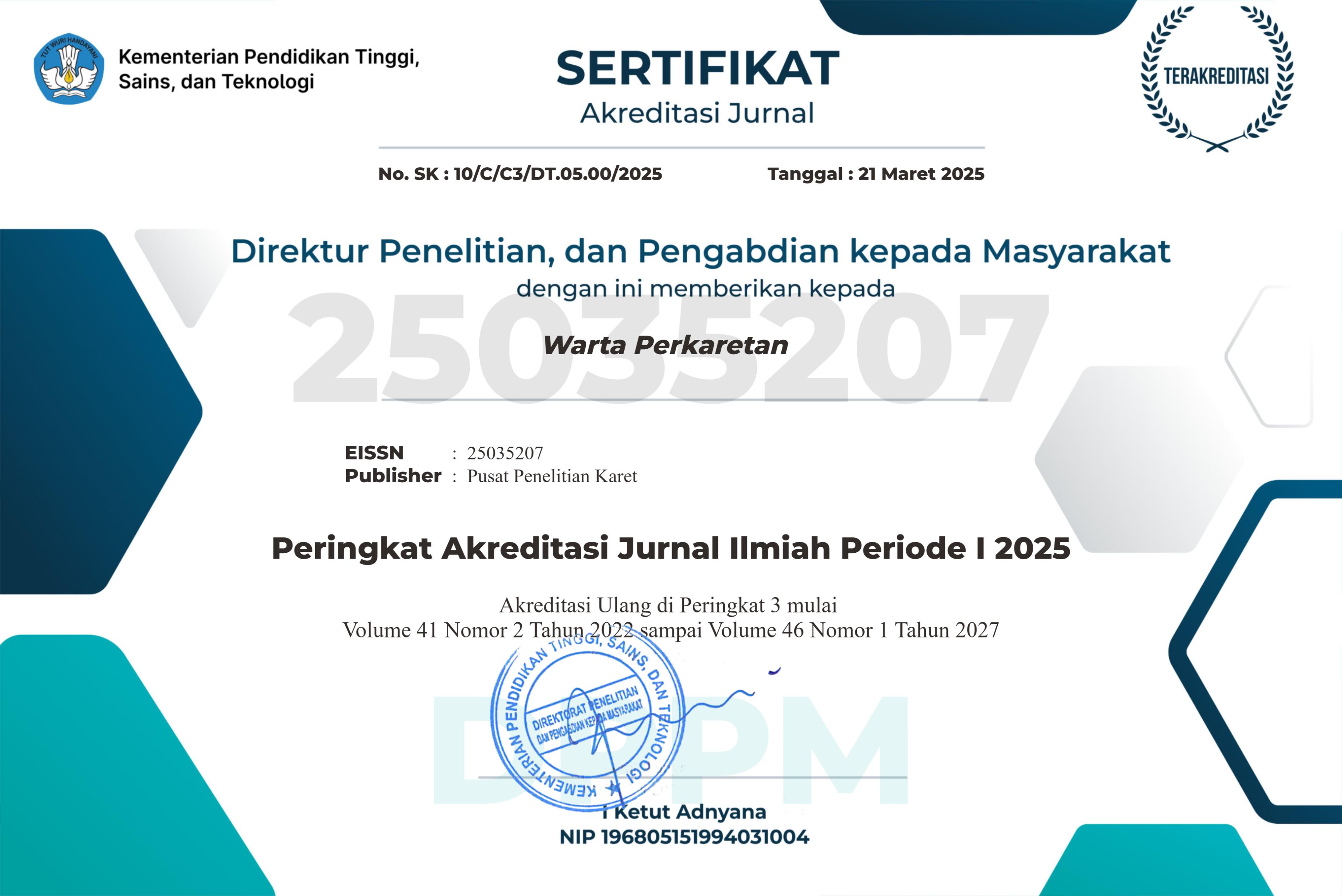KAJIAN MODIFIKASI KIMIA SECARA KOPOLIMERISASI CANGKOK PADA PEMBUATAN KARET ALAM TERMOPLASTIK
DOI:
https://doi.org/10.22302/ppk.wp.v34i1.64Keywords:
Karet alam, termoplastik, monomer vinilikAbstract
Modifikasi diperlukan untuk memperbaiki kelemahan karet alam sehingga dapat memperluas aplikasinya dalam industri. Salah satu modifikasi kimiawi pada lateks karet alam terdeproteinisasi dapat dilakukan secara kopolimerisasi cangkok dengan monomer termoplastik golongan vinilik (metil metakrilat dan stirena) untuk menghasilkan karet alam termoplastik yang bersifat kuat, keras, kaku, mudah diproses, dan tahan terhadap oksidasi. Kopolimerisasi cangkok umumnya dilakukan dengan teknik polimerisasi emulsi mekanisme radikal bebas. Keberhasilan reaksi kopolimeriasi cangkok yang ditunjukkan dengan efisiensi cangkok yang tinggi dipengaruhi oleh rasio karet terhadap monomer, serta pemilihan jenis dan dosis inisator maupun emulsifier. Hasil kopolimer yang terbentuk dapat dikonfirmasi melalui analisis kualitatif maupun kuantitatif. Dalam industri kopolimer karet alam dengan monomer vinilik dapat digunakan sebagai perekat atau adhesif, compatibilizer agent, surface modified agent, hardness modifier, serta industri alas kaki. Oleh karena itu penelitian dan pengembangan tentang kopolimerisasi cangkok karet alam dapat mendukung kemajuan agroindustri karet alam nasional.Downloads
Published
2015-04-15
How to Cite
Puspitasari, S., Budianto, E., & Maspanger, D. R. (2015). KAJIAN MODIFIKASI KIMIA SECARA KOPOLIMERISASI CANGKOK PADA PEMBUATAN KARET ALAM TERMOPLASTIK. Warta Perkaretan, 34(1), 65–76. https://doi.org/10.22302/ppk.wp.v34i1.64
Issue
Section
Review Article
License
Copyright (c) 2015 Warta Perkaretan

This work is licensed under a Creative Commons Attribution-NonCommercial-ShareAlike 4.0 International License.
Submission of a original research or review articles in Warta Perkaretan implies that the submitted  manuscript has not been published in any scientific journal (except being part of the abstract, thesis, or report). The submitted manuscript also is not under consideration for publication elsewhere. All co-authors involve in the publication of the manuscript should give their approval. Once, the manuscript is accepted and then published in Warta Perkaretan, the Author(s) keep hold the copyright and retain publishing right without restrictions. Author(s) and Warta Perkaretan users are allowed to multiply the published manuscript as long as not for commercial purposes. The journal users are also permissible to share the published manuscript with an acknowledgement to the Author(s). The Editorial Boards suggest that the Authors should manage patent before publishing their new inventions.







